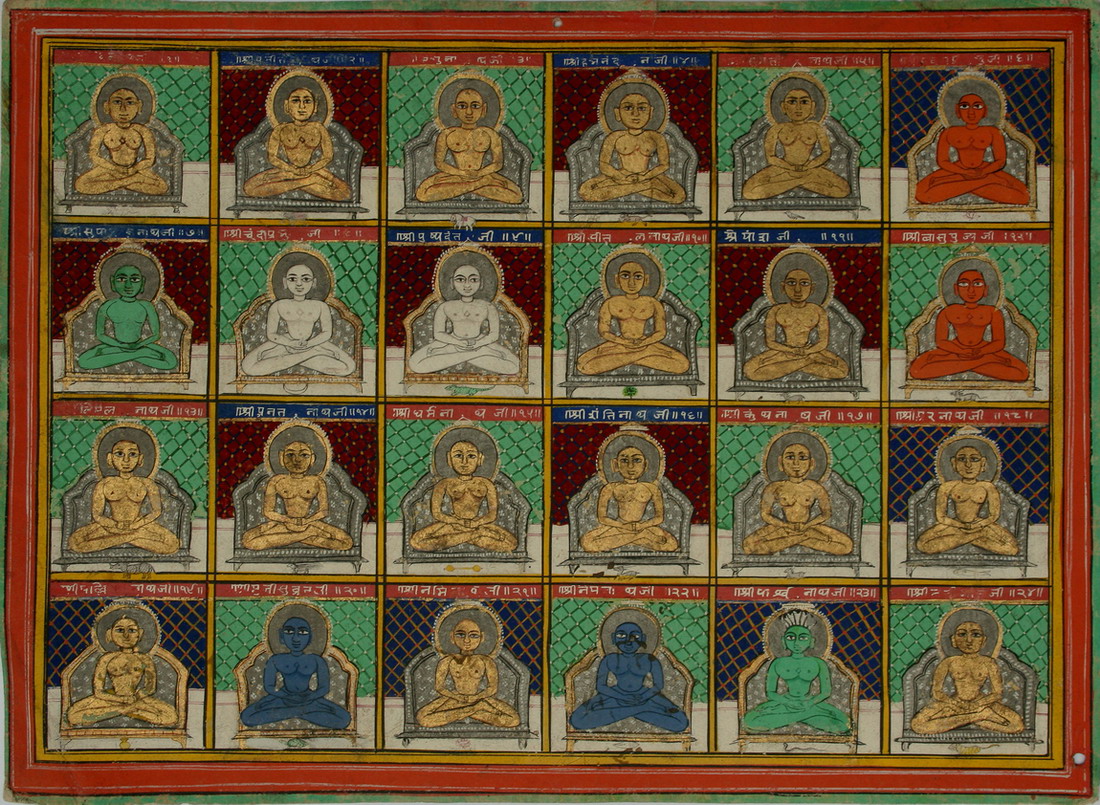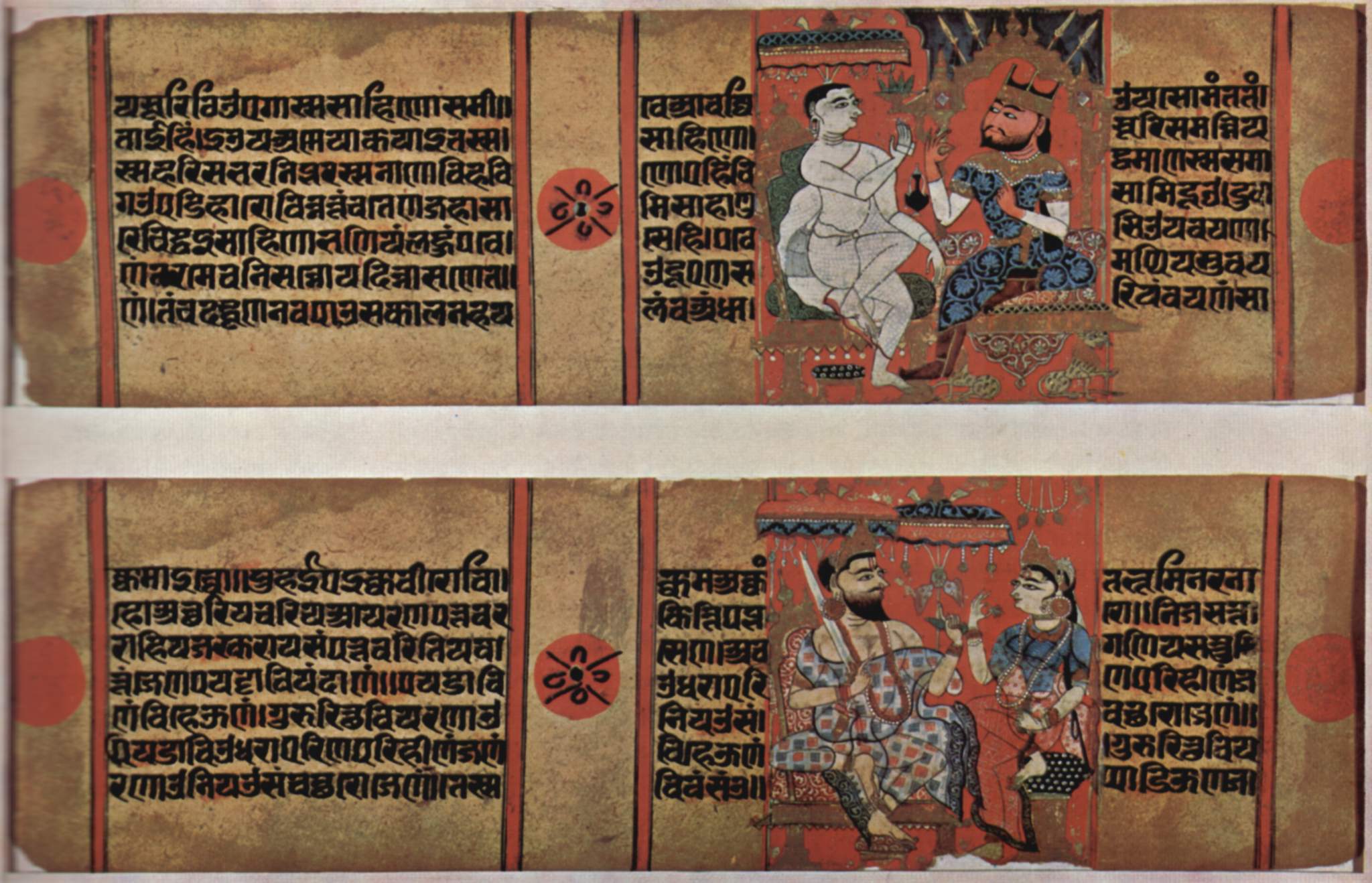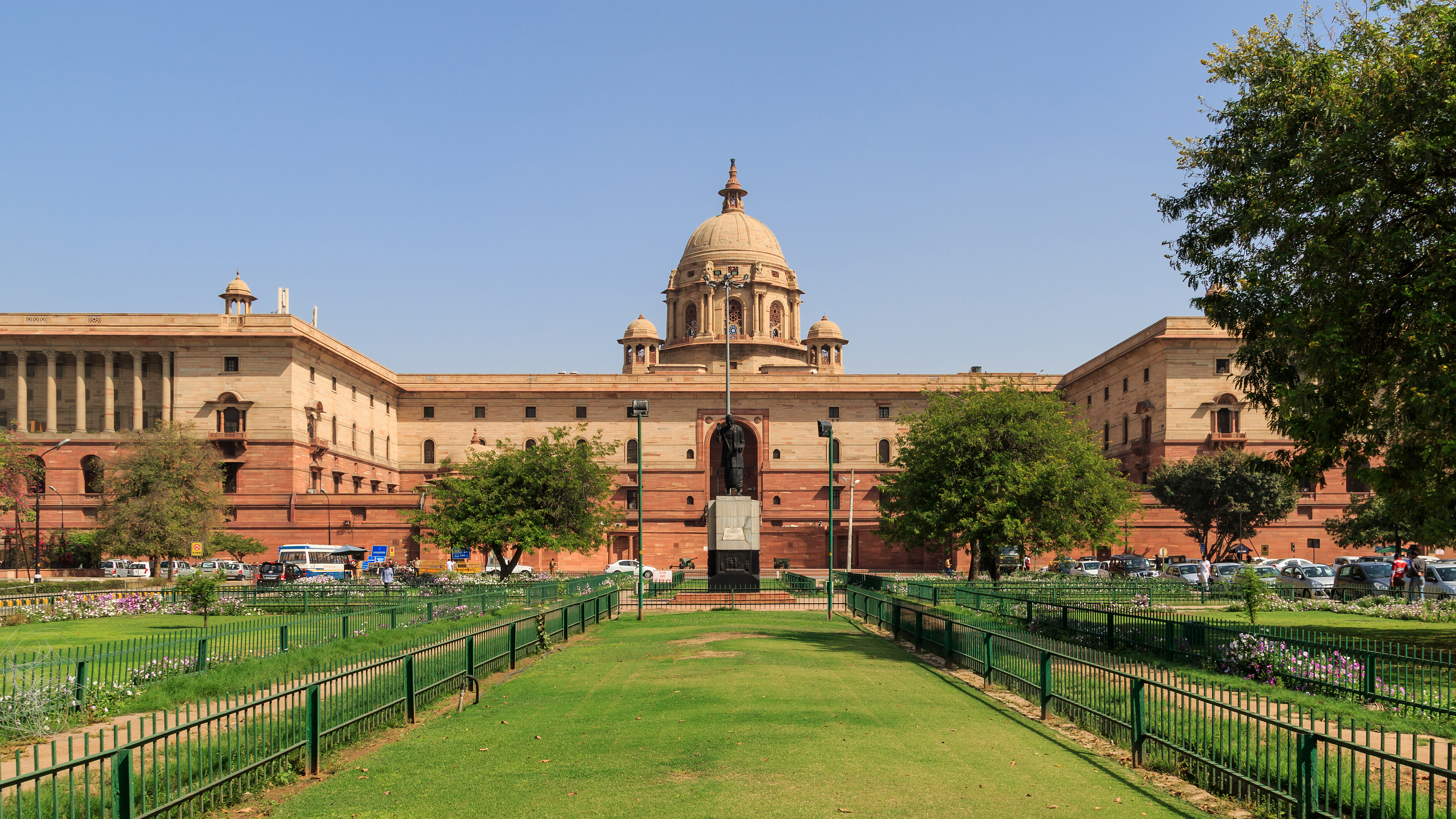|
Pushpadanta (Jain Monk)
In Jainism, Pushpadanta (), also known as Suvidhinatha, was the ninth Tirthankara of the present age (''Avasarpini''). According to Jain belief, he became a siddha and an arihant (Jainism), arihant, a liberated soul that has destroyed all of its Karma in Jainism, karma. Biography Puṣpadanta bhagwan, also known as Suvidhinatha, was the ninth Tirthankara of the present age (''Avasarpini''). According to Jain belief, they became a siddha and an arihant (Jainism), arihant, a liberated soul that has destroyed all of its Karma in Jainism, karma. Puṣpadanta bhagwan was born to King Sugriva and Queen Rama at Kakandi (modern Khukhundoo, Deoria, Uttar Pradesh) to the Ikshvaku dynasty. Their birth date was the fifth day of the Margshrsha Krishna month of the Vikram Samvat. Puṣpadant bhagwan was the ninth Tirthankara who re-established Jain monasticism, the four-part sangha in the tradition started by Rishabhanatha bhagwan. Pushpadanta prabhu is associated with Alligator emblem, Mal ... [...More Info...] [...Related Items...] OR: [Wikipedia] [Google] [Baidu] |
Tirthankara
In Jainism, a ''Tirthankara'' (; ) is a saviour and supreme preacher of the ''Dharma (Jainism), dharma'' (righteous path). The word ''tirthankara'' signifies the founder of a ''Tirtha (Jainism), tirtha'', a fordable passage across ''Saṃsāra (Jainism), saṃsāra'', the sea of interminable birth and death. According to Jains, ''tirthankaras'' are the supreme preachers of ''dharma'', who have conquered ''saṃsāra'' on their own and made a path for others to follow. After understanding the true nature of the self or soul, the ''Tīrthaṅkara'' attains ''kevala jnana'' (omniscience). A Tirthankara provides a bridge for others to follow them from ''saṃsāra'' to ''moksha'' (liberation). In Jain cosmology, the wheel of time is divided into two halves, Utsarpiṇī', the ascending time cycle, and ''avasarpiṇī'', the descending time cycle (said to be current now). In each half of the cycle, exactly 24 ''tirthankaras'' grace this part of the universe. There have been infini ... [...More Info...] [...Related Items...] OR: [Wikipedia] [Google] [Baidu] |
Vikram Samvat
Vikram Samvat (ISO: ''Vikrama Saṁvata''; abbreviated VS), also known as the Vikrami calendar is a Hindu calendar historically used in the Indian subcontinent and still also used in several Indian states and Nepal. It is a lunisolar calendar, using twelve to thirteen lunar months each solar sidereal years. The year count of the Vikram Samvat calendar is usually 57 years ahead of the Gregorian calendar, except during January to April, when it is ahead by 56 years. Vikram Samvat is an official calendar of Nepal. And unlike India where it is used only for religious dates, the solar version of Vikram Samvat is an official calendar used for everything from school sessions to legal contracts to any official functions. History A number of ancient and medieval inscriptions used the Vikram Samvat. Although it was reportedly named after the legendary king Vikramaditya, the term "Vikrama Samvat" does not appear in the historical record before the 9th century; the same calendar sy ... [...More Info...] [...Related Items...] OR: [Wikipedia] [Google] [Baidu] |
New Delhi
New Delhi (; ) is the Capital city, capital of India and a part of the Delhi, National Capital Territory of Delhi (NCT). New Delhi is the seat of all three branches of the Government of India, hosting the Rashtrapati Bhavan, New Parliament House, New Delhi, Sansad Bhavan, and the Supreme Court of India, Supreme Court. New Delhi is a Municipal governance in India, municipality within the NCT, administered by the New Delhi Municipal Council (NDMC), which covers mostly Lutyens' Delhi and a few adjacent areas. The municipal area is part of a larger List of districts in India, administrative district, the New Delhi district. Although colloquially ''Delhi'' and ''New Delhi'' are used interchangeably to refer to the National Capital Territory of Delhi, both are distinct entities, with the municipality and the New Delhi district forming a relatively small part within the megacity of Delhi. The National Capital Region (India), National Capital Region is an even larger entity, compris ... [...More Info...] [...Related Items...] OR: [Wikipedia] [Google] [Baidu] |
Government Of India
The Government of India (ISO 15919, ISO: Bhārata Sarakāra, legally the Union Government or Union of India or the Central Government) is the national authority of the Republic of India, located in South Asia, consisting of States and union territories of India, 36 states and union territories. The government is led by the president of India (currently ) who largely exercises the executive powers, and selects the Prime Minister of India, prime minister of India and other ministers for aid and advice. Government has been formed by the The prime minister and their senior ministers belong to the Union Council of Ministers, its executive decision-making committee being the Cabinet (government), cabinet. The government, seated in New Delhi, has three primary branches: the legislature, the executive and the judiciary, whose powers are vested in bicameral Parliament of India, Union Council of Ministers (headed by prime minister), and the Supreme Court of India respectively, with a p ... [...More Info...] [...Related Items...] OR: [Wikipedia] [Google] [Baidu] |
Ministry Of Information And Broadcasting (India)
The Ministry of Information and Broadcasting is a ministerial level agency of the Government of India responsible for the formulation and administration of rules, regulations and laws in the areas of information, broadcasting, the press, and the cinema of India. The Ministry is responsible for the administration of the Press Information Bureau and Prasar Bharati, the broadcasting arm of the Indian Government. The Central Board of Film Certification is the other important statutory body subordinate to this ministry, responsible for the regulation and certification of Cinema of India, motion pictures broadcast in India. Organisation * Broadcasting ** Conditional Access System (CAS) ** Community radio, Community Radio Stations ** Prasar Bharati ** Doordarshan ** All India Radio, Akashvani (All India Radio) ** Broadcast Engineering Consultants India Limited ** Uplinking / Downlinking of TV Channels ** Content Regulation on Private TV Channels ** Direct to Home (DTH) ** Internet P ... [...More Info...] [...Related Items...] OR: [Wikipedia] [Google] [Baidu] |
Publications Division
Publications Division (India) is a publishing house in India, with its headquarters at Soochna Bhawan, CGO Complex, Lodhi Road, New Delhi. It functions as a division of the Ministry of Information and Broadcasting (India). It publishes books in Hindi, English and other regional languages. History Established in 1941, Publications Division publishes books on a range of subjects including arts, culture, national heritage, biographies of national leaders in various fields, science, flora and fauna and children's literature. The house has published a 100-volume set of the collected works of Mahatma Gandhi as well as individual volumes of his work. The Publications Division also publishes journals including ''Yojana'', on development; ''Kurukshetra'', on rural development; ''Ajkal'', a literary magazine; ''Bal Bharati'', for children; and ''Employment News'', which lists government job openings. It also participates in exhibitions and book fairs. The materials are sold through age ... [...More Info...] [...Related Items...] OR: [Wikipedia] [Google] [Baidu] |
Maharaja Sayajirao University Of Baroda
Maharaja Sayajirao University of Baroda, formerly Baroda College, is a public university in the city of Vadodara, Gujarat, India. Originally established as a college in 1881, it became a public university on April 30, 1949 and was renamed after its benefactor Maharaja Sayajirao Gaekwad III, the former ruler of Baroda State. The university offers undergraduate, postgraduate, and doctoral programs. It houses 89 departments spread over 6 campuses (2 rural and 4 urban) covering 275 acres of land. History The university has its origins in the Baroda College, established in 1881 by Baroda State. The main building, which houses the Faculty of Arts, was designed by Robert Chisholm (architect), Robert Fellowes Chisholm in Indo-Saracenic architecture style, in a fusion of Indian and Byzantine arches and domes in brick and polychrome stone. The main dome on the convocation hall was modelled after the great dome of the Gol Gumbaz in Bijapur, Karnataka, Bijapur. Pratap Singh Gaekwad of Ba ... [...More Info...] [...Related Items...] OR: [Wikipedia] [Google] [Baidu] |
Jainism And Non-creationism
According to Jain doctrine, the universe and its constituents—soul, matter, space, time, and principles of motion—have always existed. Jainism does not support belief in a creator deity. All the constituents and actions are governed by universal natural laws. It is not possible to create matter out of nothing and hence the sum total of matter in the universe remains the same (similar to law of conservation of mass). Jain texts claim that the universe consists of ''jiva'' (life force or souls) and ''ajiva'' (lifeless objects). The soul of each living being is unique and uncreated and has existed during beginningless time. The Jain theory of causation holds that a cause and its effect are always identical in nature and hence a conscious and immaterial entity like God cannot create a material entity like the universe. Furthermore, according to the Jain concept of divinity, any soul who destroys its ''karmas'' and desires achieves liberation ( ''nirvana''). A soul who destr ... [...More Info...] [...Related Items...] OR: [Wikipedia] [Google] [Baidu] |
God In Jainism
In Jainism, godliness is said to be the inherent quality of every soul. This quality, however, is subdued by the soul's association with karmic matter. All souls who have achieved the natural state of unlimited bliss, unlimited knowledge ('' kevala jnana''), unlimited power and unlimited perception are regarded as God in Jainism. Jainism rejects the idea of a creator deity responsible for this universe's manifestation, creation, or maintenance. Instead, souls (in this case, ''devis'' or ''devas'') who have reached Heaven for their merits and deeds influence the Universe for a fixed period until they undergo reincarnation and continue the cycle of enlightenment. According to Jain doctrine, the universe and its constituents (namely, soul, matter, space, time, and principles of motion) have always existed. All constituents and actions are governed by universal natural laws and a "perfect soul" (an immaterial entity that cannot create or affect a material entity like the unive ... [...More Info...] [...Related Items...] OR: [Wikipedia] [Google] [Baidu] |
Yakshi
Yakshinis or Yakshis (, , Prakrit: ) are a class of female nature spirits in Hindu, Buddhist, and Jain religious mythologies that are different from Devas and Asuras and Gandharvas or Apsaras. Yakshinis and their male counterparts, the Yakshas, are one of the many paranormal beings associated with the centuries-old sacred groves of India. Yakshis are also found in the traditional legends of Northeastern Indian tribes, ancient legends of Kerala, and in the folktales of Kashmiri Muslims. Sikhism also mentions yakshas in its sacred texts. The well behaved and benign ones are worshipped as tutelaries, they are the attendees of Kubera, the treasurer of the gods, and also the Hindu god of wealth who ruled Himalayan kingdom of Alaka. There are also malign and mischievous yakshinis with poltergeist-like behaviours, that can haunt and curse humans according to Indian folklore. The ashoka tree is closely associated with yakshinis. The young girl at the foot of the tree is an a ... [...More Info...] [...Related Items...] OR: [Wikipedia] [Google] [Baidu] |
Yaksha
The Yakshas (, , ) in Mythology are a broad class of nature spirits, usually benevolent, but sometimes mischievous or capricious, connected with water, fertility, trees, the forest, treasure and wilderness. They appear in Hindu, Jain and Buddhist texts, as well as ancient and medieval era temples of South Asia and Southeast Asia as guardian deities. The feminine form of the word is or Yakshini (, ; ). In Hindu, Jain and Buddhist texts, the s have a dual personality. On the one hand, a may be an inoffensive nature-fairy, associated with woods and mountains; but there is also a darker version of the , which is a kind of ( bhuta) that haunts the wilderness and waylays and devours travellers, similar to the rakṣasas. Early yakshas Yakshas appear in Hindu, Jain and Buddhist texts. Several monumental yakshas are known from the time of the Maurya Empire period. They are variously dated from around the 3rd century BCE to the 1st century BCE. These statues are monumental (usua ... [...More Info...] [...Related Items...] OR: [Wikipedia] [Google] [Baidu] |
Rishabhanatha Bhagwan
Rishabhanatha (Devanagari: ऋषभनाथ), also Rishabhadeva (Devanagari: ऋषभदेव, ), Rishabha (Devanagari: ऋषभ, ) or Ikshvaku (Devanagari: इक्ष्वाकु, ''Ikṣvāku''), is the first (Supreme preacher) of Jainism. He was the first of twenty-four teachers in the present half-cycle of time in Jain cosmology and called a "ford maker" because his teachings helped one cross the sea of interminable rebirths and deaths. The legends depict him as having lived millions of years ago. He was the spiritual successor of Sampratti Bhagwan, the last Tirthankara of the previous time cycle. He is also known as Ādinātha (), as well as Adishvara (first Jina), Yugadideva (first deva of the yuga), Prathamarajeshwara (first God-king) and Nabheya (son of Nabhi). He is also known as Ikshvaku, establisher of the Ikshvaku dynasty. Along with Mahavira, Parshvanath, Neminath, and Shantinath, Rishabhanatha is one of the five Tirthankaras that attract the most de ... [...More Info...] [...Related Items...] OR: [Wikipedia] [Google] [Baidu] |









